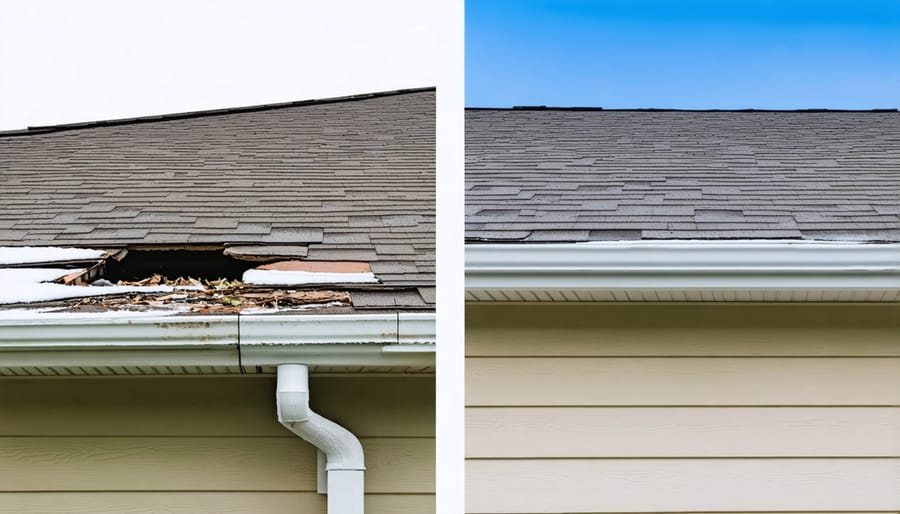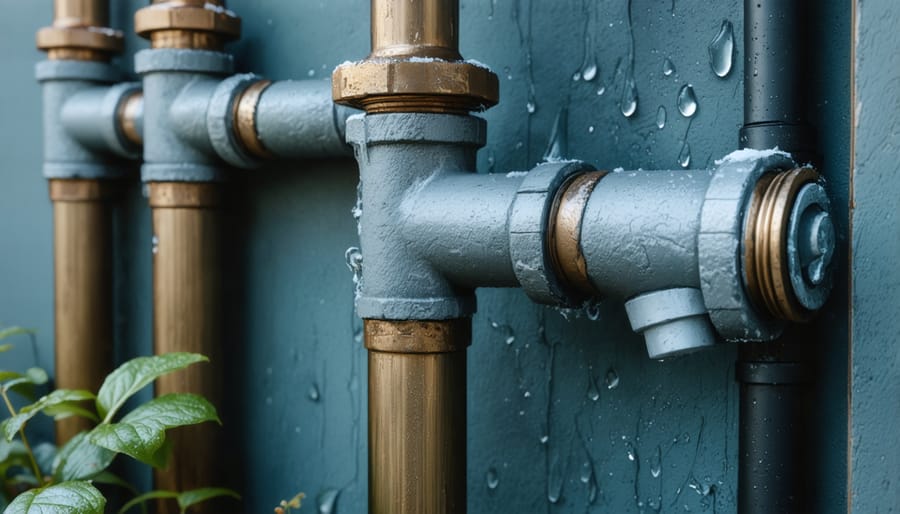Cut maintenance costs by 30-50% through strategic preventive care and smart resource management. Regular equipment inspections catch minor issues before they escalate into costly repairs, while proper seasonal maintenance schedules eliminate emergency service calls. Implementing a data-driven maintenance program tracks spending patterns, identifies cost-heavy areas, and reveals opportunities for efficiency improvements.
Today’s homeowners face rising maintenance expenses across all sectors, from HVAC systems to landscape upkeep. Yet studies show that proactive maintenance reduces long-term costs by up to 40% compared to reactive repairs. Modern monitoring tools and preventive techniques make it possible to maintain high property standards while significantly reducing annual maintenance budgets.
Smart automation, energy-efficient upgrades, and proper staff training create a comprehensive approach to maintenance cost reduction. These strategies not only lower immediate expenses but also extend equipment lifespan, optimize resource allocation, and ensure sustainable cost savings year after year.
Spring Cost-Cutting Maintenance Strategies
Post-Winter Inspection Checklist
As winter’s harsh conditions recede, conducting a thorough inspection of your outdoor structures can prevent costly repairs down the line. Start by examining your shed’s roof for any ice dam damage, loose shingles, or water stains that might indicate leaks. Check gutters and downspouts for winter debris and ensure proper drainage to avoid foundation issues.
Inspect door hinges and handles for rust or stiffness caused by winter moisture, applying lubricant where needed. Look for gaps in weather stripping and replace if necessary. Pay special attention to the foundation, noting any frost heave damage or shifting that could affect structural integrity.
Don’t forget to check your energy-efficient outdoor lighting fixtures for winter wear and tear. Examine wooden components for rot or pest damage, particularly in areas where snow may have accumulated. Check ventilation systems to ensure they’re clear and functioning properly after winter’s challenges.
Finally, look for signs of paint damage or peeling, making note of areas that might need touch-ups to prevent wood deterioration. Address any issues promptly to avoid more extensive repairs later.

DIY Spring Repairs That Save Money
Spring is the perfect time to tackle simple maintenance tasks that can save you hundreds in professional repair costs. Start by inspecting your shed’s exterior for loose boards, protruding nails, or damaged trim. These issues can be fixed easily with basic tools and materials from your local hardware store. Clean and lubricate door hinges and handles with WD-40 to prevent rust and ensure smooth operation.
Check the roof for minor leaks or damaged shingles, which you can often repair with roofing sealant or replacement shingles. Inspect the foundation area and regrade the soil if needed to prevent water pooling. A few bags of gravel or topsoil can solve drainage issues before they become major problems.
Don’t forget to examine window seals and replace any cracked caulking – this simple task prevents moisture damage and improves energy efficiency. Finally, give wooden surfaces a fresh coat of preservative or paint to extend their lifespan. These DIY repairs typically cost under $100 in materials but can prevent thousands in future damage.
Summer Protection Tactics

Heat-Related Maintenance Tips
High temperatures can take a toll on your outdoor structures and equipment, but implementing preventive measures can significantly reduce maintenance costs. Start by applying UV-resistant sealants to wooden surfaces and regularly checking for heat-induced warping or cracking. It’s essential to maintain outdoor furniture by keeping it covered during peak sunlight hours and storing sensitive items in shaded areas.
Install proper ventilation systems in storage structures to prevent heat buildup, which can damage stored items and accelerate material deterioration. Consider adding reflective roof coatings or heat-resistant paint to reduce interior temperatures and protect stored belongings. Regular inspection of door hinges and locks is crucial, as extreme heat can cause metal components to expand and misalign.
Keep air conditioning units clean and free from debris, and ensure proper shade around them to improve efficiency and reduce energy costs. Trim vegetation near structures to promote airflow and prevent moisture accumulation, which can lead to mold growth in hot, humid conditions. These simple preventive steps can extend the life of your outdoor investments and minimize expensive repairs down the line.
Water-Smart Maintenance
Implementing smart watering practices can significantly reduce your maintenance costs while keeping your outdoor space healthy and vibrant. Start by installing a programmable irrigation system with rain sensors, which automatically adjusts watering schedules based on weather conditions. This prevents overwatering and can cut your water bill by up to 30%.
Consider grouping plants with similar water needs together, a practice known as hydrozoning. This ensures efficient water distribution and prevents both waste and plant stress. Adding a layer of mulch around plants and in garden beds helps retain moisture, reducing watering frequency while providing efficient storage solutions for water in the soil.
Collect rainwater using barrels or tanks positioned under downspouts – it’s free and perfect for garden use. Water early morning or late evening to minimize evaporation, and consider installing drip irrigation for targeted watering that delivers moisture directly to plant roots. These simple adjustments can lead to substantial savings on your water bills while maintaining a healthy landscape year-round.
Fall Prevention Techniques
Pre-Winter Preparation
Taking preventive measures before winter arrives can significantly reduce maintenance costs and protect your outdoor structures from costly damage. Start by thoroughly cleaning your gutters and downspouts to prevent ice dams and water damage. Inspect your roof for loose or damaged shingles, and seal any gaps around windows and doors with weather stripping to prevent heat loss and moisture intrusion.
Apply a protective sealant to wooden surfaces, especially on decks and fences, to guard against moisture damage and rot. Drain and insulate outdoor water pipes and faucets to prevent freezing and potential bursts. Cover or store outdoor furniture and equipment to protect them from harsh weather conditions.
Check your heating system and replace filters to ensure efficient operation throughout winter. Consider installing programmable thermostats to optimize energy usage and reduce heating costs. Trim tree branches that could potentially fall on structures during storms, and ensure proper drainage around your property to prevent water pooling and foundation issues.
Remember, a small investment in winter preparation can save thousands in potential repair costs later.
Storage Solutions That Extend Item Life
Proper storage can significantly extend the life of your seasonal items, ultimately saving you money on replacements. Start by investing in weatherproof storage solutions like heavy-duty plastic bins with secure lids for smaller items. For larger equipment, consider using wall-mounted racks and hooks to keep items off the ground and prevent moisture damage.
Create designated zones in your storage space for different seasons. Summer items like garden tools should be cleaned, dried, and lightly oiled before storing for winter. For power equipment, drain fuel tanks and run engines dry to prevent carburetor issues. Protect metal surfaces with a light coat of mineral oil to prevent rust.
When storing outdoor furniture cushions, ensure they’re completely dry and store them in breathable bags or containers to prevent mold growth. Use vacuum storage bags to compress bulky items and save space. For holiday decorations, invest in partitioned storage containers to prevent tangling and breakage.
Consider adding moisture-absorbing products like silica gel packets or dehumidifiers in your storage area to maintain optimal conditions. Label everything clearly with contents and season to make rotation easier and prevent unnecessary purchases of items you already own.
Winter Protection Strategies
Cold Weather Protection Tips
Winter weather can significantly impact your outdoor structures, but a few preventive measures can save you hundreds in repair costs. Start by inspecting all seals and weatherstripping around doors and windows, replacing any that show signs of wear. Apply a fresh coat of water-resistant sealant to exposed wood surfaces before the first frost to prevent moisture damage.
Install foam pipe insulators on exposed plumbing and consider using heat tape in areas prone to freezing. Clear gutters and downspouts of debris to prevent ice dams, which can cause costly water damage to roofs and walls. For metal structures, apply rust inhibitor to vulnerable areas and check for any loose panels that could be damaged by heavy snow or ice.
Consider investing in snow guards for sloped roofs to prevent dangerous snow slides, and maintain proper ventilation to prevent condensation buildup. Keep snow from piling against walls by shoveling a clear perimeter around your structures. These simple steps not only protect your investment but also help avoid expensive emergency repairs during the coldest months of the year.

Snow and Ice Management
Winter maintenance doesn’t have to break the bank. Start by investing in a quality snow shovel and ice scraper – these basic tools will handle most light snowfall situations without requiring expensive equipment. Create your own de-icing mixture by combining regular table salt with sand or cat litter, which provides both melting power and traction at a fraction of the cost of commercial products.
Prevention is key to reducing snow and ice management costs. Install snow fencing in strategic locations to minimize drifting, and consider applying a pre-treatment solution before expected snowfall. This makes post-storm cleanup much easier and reduces the amount of de-icer needed.
For larger areas, consider sharing the cost of a snow blower with neighbors or hiring services only for major storms. Many communities have formed “snow cooperatives” where residents share equipment and labor, significantly reducing individual costs. Remember to clear snow promptly to prevent ice formation, which is more expensive and time-consuming to manage.
Protect your property by carefully removing icicles and monitoring roof snow load – addressing these issues early prevents costly repairs from water damage or structural issues.
By implementing these proven maintenance cost reduction strategies, you can significantly extend the life of your outdoor structures while keeping your wallet happy. Regular inspections, seasonal maintenance routines, and prompt attention to minor issues can prevent costly repairs down the line. The key is to stay proactive rather than reactive – addressing small problems before they become major headaches.
Remember that investing in quality materials and protective measures initially might cost more upfront but typically results in substantial long-term savings. Simple practices like proper cleaning, timely repairs, and appropriate weather protection can save hundreds or even thousands of dollars in replacement costs.
Creating and following a maintenance calendar, keeping detailed records of repairs, and staying informed about best maintenance practices are habits that pay off tremendously over time. Whether you’re maintaining a shed, deck, or other outdoor structure, these cost-effective strategies help preserve your investment while maintaining its functionality and appearance.
By making maintenance a regular part of your property care routine, you’ll enjoy the benefits of reduced costs, improved durability, and enhanced property value for years to come.





Leave a Reply